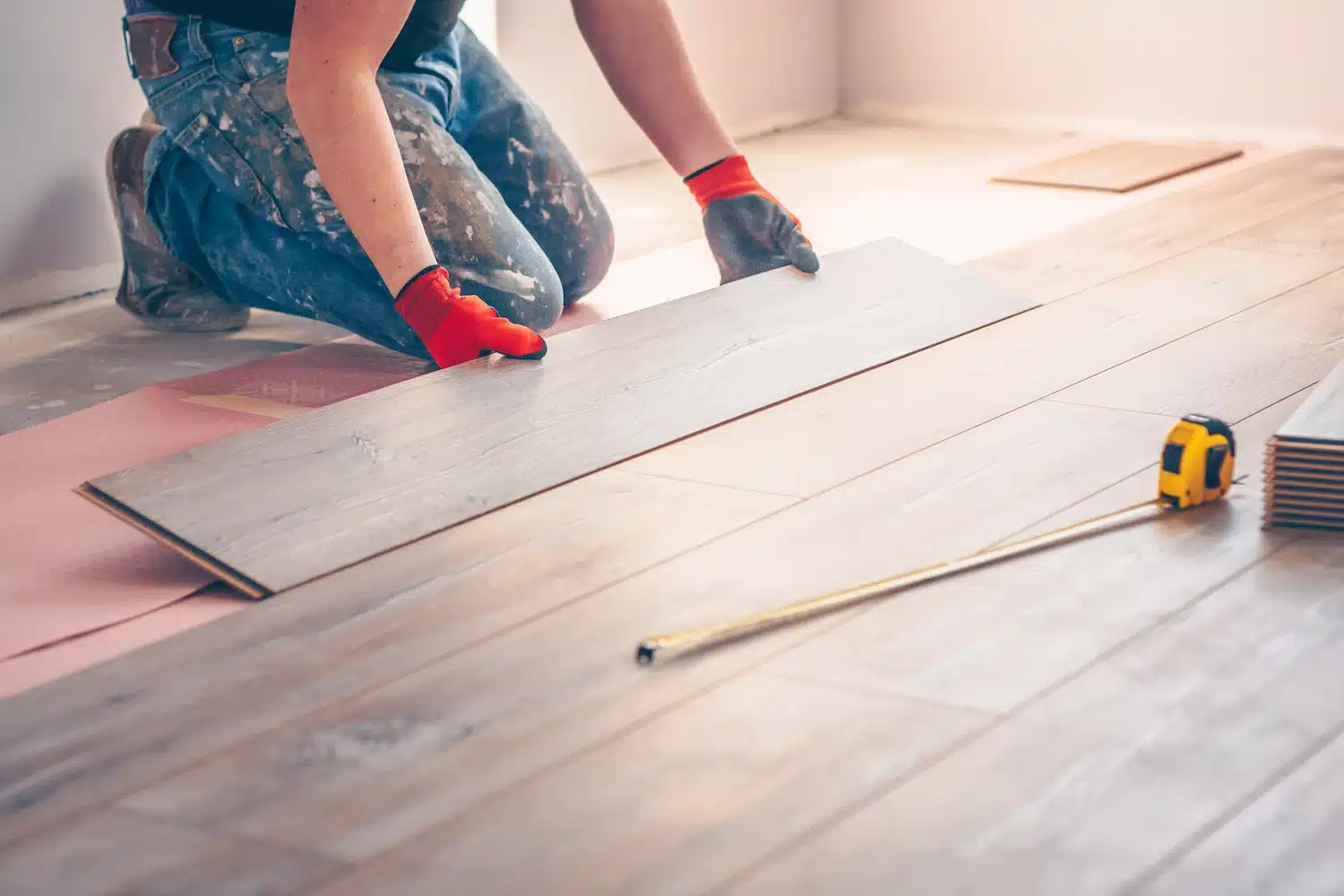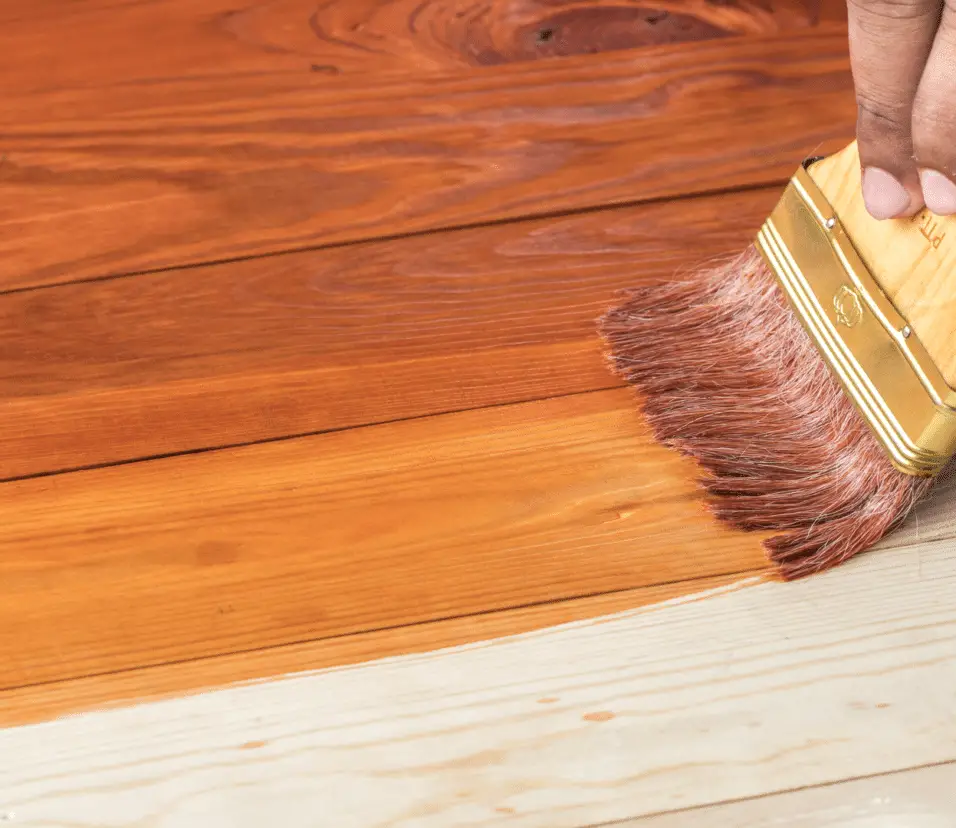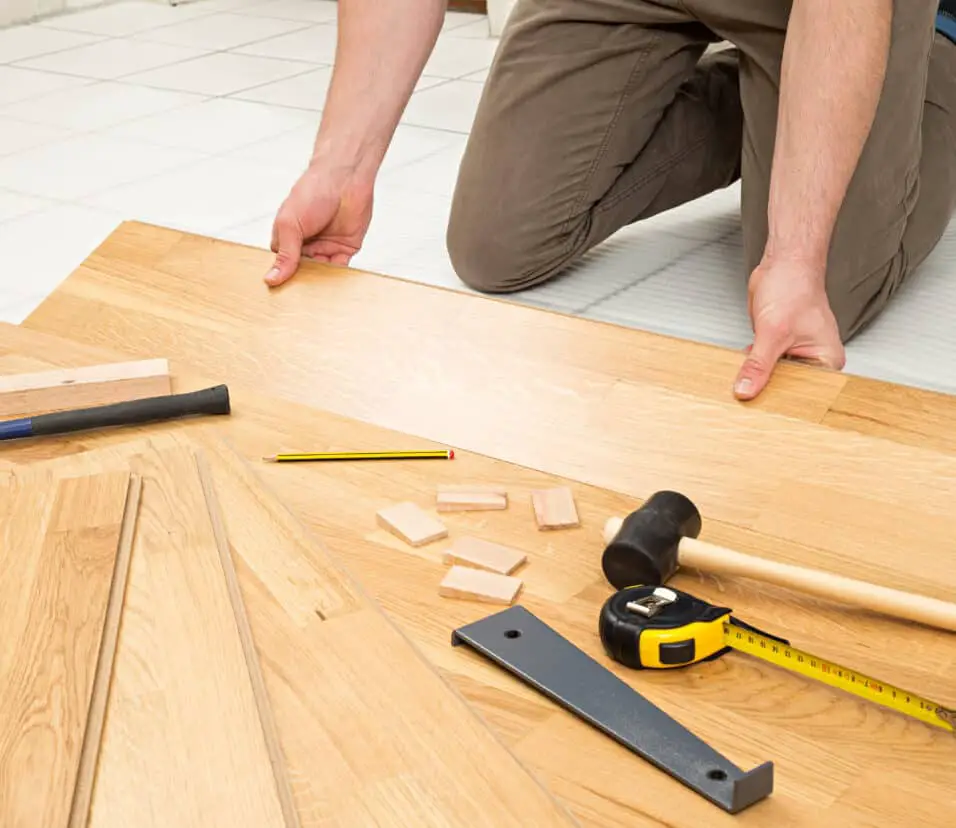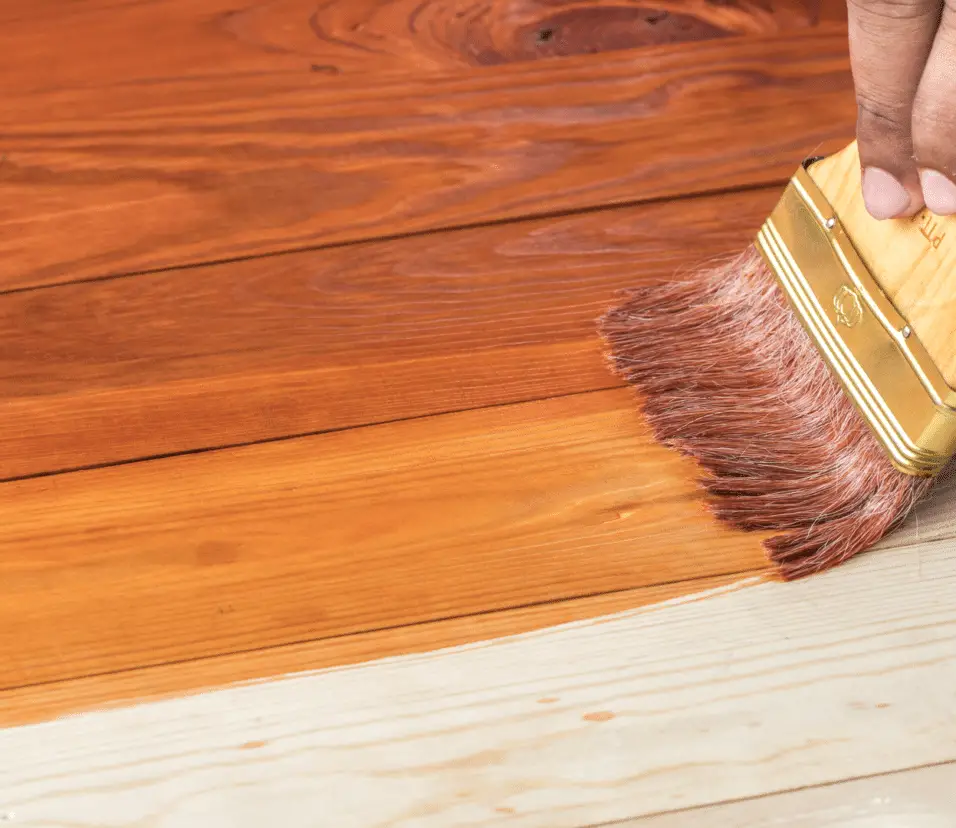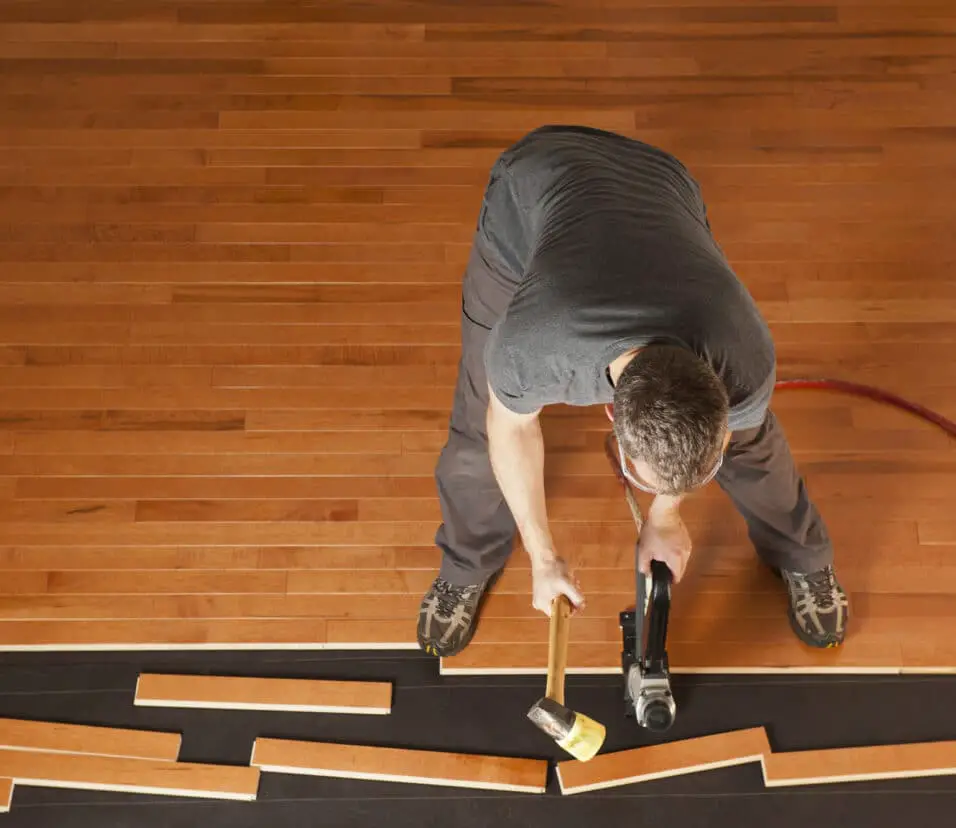How To Level A Wood Floor
Introduction
How To Level A Wood Floor: Having an uneven wood floor can not only be visually unappealing but also create problems with functionality and stability. Whether you’ve noticed gaps, dips, or slopes in your wood flooring, leveling the floor is essential to restore its beauty and ensure a safe and comfortable living space. In this guide, we will explore the steps and methods involved in leveling a wood floor, providing you with the knowledge to tackle this project effectively.
Before embarking on the leveling process, it’s important to assess the extent of the unevenness in your wood floor. Using a long straightedge, such as a level or a flat board, check different areas of the floor for gaps or rocking. This will help you determine the severity of the problem and guide your approach to leveling.
The most common method for leveling a wood floor involves the use of a self-leveling compound. This liquid mixture is designed to flow and settle into low spots, filling them in and creating a smooth, even surface. However, it’s important to note that self-leveling compounds are suitable for minor to moderate unevenness. For severe cases, alternative methods such as sanding down high spots or adding shims may be required.
The process of leveling a wood floor with a self-leveling compound typically involves several steps. To ensure adherence, clean the floor beforehand. Remove dust and dirt. To improve compound-floor adhesion, apply a primer.

Can you self level a wooden floor?
you can pour self-leveling underlayment over a wood subfloor. so we’re going to show you how in a few steps here today some critical things that you would want to do in order for this to be a successful self-leveling underlayment pour over a wood subfloor.
Self-leveling compounds can be used to address minor to moderate unevenness in a wood floor. However, it’s important to note that the self-leveling process may not be suitable for all situations, especially if the floor has severe structural issues or significant damage. Professional advice is advised in such circumstances.
Self-leveling substances are liquid combinations that flow into low regions and level the surface. They level subfloors for new flooring.
Before applying a self-leveling compound, proper preparation is crucial. Clean the wood floor of trash, dust, and loose particles. It’s important to ensure the floor is dry and stable before proceeding. Additionally, it may be necessary to prime the floor to enhance adhesion between the compound and the wood surface.
After preparation, mix the self-leveling compound per manufacturer’s directions. A trowel or gauge rake spreads it on the floor. The compound will naturally flow and settle into the low areas, filling in gaps and creating a level surface.
How Can I Level My Floor Cheaply?
The easiest way is to use a self-leveling compound, also called liquid floor underlayment or floor resurfacer, within sections of level-cut rails. The material flows out like thick syrup, then hardens into a smooth, perfectly level surface, sometimes in less than an hour.
While these options may not be suitable for severe cases of unevenness, they can help improve the levelness of your floor without breaking the bank. Here are some ways to level your floor cheaply:
Self-Leveling Compound
Self-leveling compounds are relatively affordable and can be a cost-effective option for minor to moderate unevenness. They are easy to use and can provide a smooth, level surface. Follow the manufacturer’s instructions for proper application and drying time.
Floor Patching Compound
Floor patching compounds are another economical choice for leveling small areas or filling in gaps. They are typically made of cement-based materials and can be applied directly to the low spots on the floor. Make sure to prepare the floor properly and apply the compound according to the manufacturer’s guidelines.
Sanding
If you have high spots on your floor, sanding them down can help achieve a more even surface. Renting a floor sander or using a hand-held sander can be a cost-effective solution. However, this method may generate dust, so take appropriate safety precautions and wear protective gear.
Plywood Underlayment
In some cases, adding plywood underlayment can help level the floor. This method is suitable when the floor has minor variations. Plywood sheets can be cut to size and placed over the existing floor to create a more even surface. Make sure to secure the plywood properly to prevent movement or squeaking.
Shims
For localized low spots, shims can be a cheap and simple solution. Shims, which are thin pieces of wood or plastic, can be inserted underneath the subfloor or between the floor joists to raise specific areas. This method requires careful measurement and placement to achieve the desired levelness.
What Is The Best Floor Leveler For Wood?
Henry 555 Level Pro is a water-based self-leveling underlayment that can be used over wood, tile and concrete. The cost is about $37 per 40lb bag at the Home Depot. Akona Self-Leveling Floor Underlayment Cement is another water-based powder mix for use over plywood and concrete. It doesn’t require primer.
When it comes to leveling a wood floor, there are several floor levelers available on the market. The best floor leveler for wood depends on various factors such as the severity of the unevenness, the type of wood flooring, and the specific requirements of your project. Here are a few popular options to consider:
Self-Leveling Compound
Wood flooring often uses self-leveling chemicals. These compounds apply easily and finish well. Cement-based materials can flow and settle, filling low places. Choose a wood-floor-friendly self-leveling compound.
Patching and Repair Compounds
Patching and repair compounds are ideal for filling in small gaps and leveling minor imperfections in wood floors. They are typically made of materials such as epoxy or latex-based compounds. These compounds are easy to apply and can help create a more level surface, especially in localized areas.
Floor Leveling Underlayment
Floor leveling underlayment products are specifically designed for leveling wood floors. They come in various forms, such as cementitious underlayments or gypsum-based self-leveling underlayments. These products provide a durable and level surface when applied over the existing wood floor, helping to correct unevenness.
Wood Fiber-Based Leveling Compounds
Wood flooring need wood-fibre levelling compound. Binders and wood particles make these composites. Pouring or trowelling them fills fractures and smooths the floor.
Plywood Underlayment
In some cases, adding a plywood underlayment can help level a wood floor. This method involves placing sheets of plywood over the existing floor to create a more even surface.
What Is A Leveling Compound For Wood Floors?
Self-Leveling Underlayment is an easy-to-use, cement-based underlayment that self-levels. Just mix it with water, pour and spread. The underlayment is excellent for smoothing and flattening interior surfaces before installing floor coverings. Use over concrete, wood, tile, terrazzo and cut back adhesive.
A levelling compound for wood floors is a specialised product used to fix flooring that isn’t perfectly flat. It is often employed prior to the installation of new flooring materials on a wood subfloor that has to have gaps, slopes, or dips filled.
Wood floor levelling chemicals often incorporate cement-based ingredients with polymers or additives to enhance flowability and adherence. These substances are liquid, so they may be poured or distributed across a floor with ease.
The primary purpose of a leveling compound is to fill in low spots, gaps, or irregularities in the wood floor, creating a flat and even surface. When applied, the compound flows and settles into the depressions, self-leveling to match the surrounding areas. This process helps eliminate visible gaps, irregularities, or rocking sensations that may be present in the floor.
Using a leveling compound offers several benefits. It helps provide a stable and smooth base for installing new flooring materials, ensuring proper adhesion and minimizing the risk of future issues. Leveling compounds also help improve the aesthetics of the floor by eliminating gaps and creating a seamless appearance.
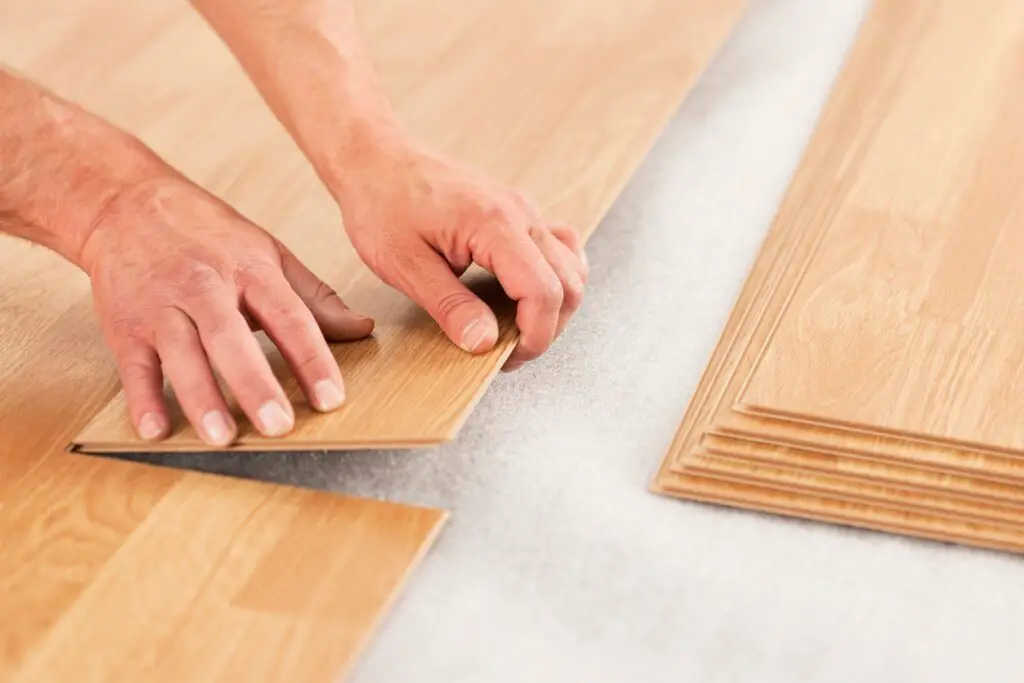
What Can I Use To Level Wood?
A faster solution that works for all types of flooring on both wood and concrete subfloors is to use a self-leveling underlayment. Available as either pre-mixed or a dry mix, it’s a cement-based material meant to be mixed (if required), poured, then troweled into low spots.
When it comes to leveling wood, there are several materials and techniques you can use depending on the severity of the unevenness and your specific requirements. Here are some options to consider for leveling wood:
Self-Leveling Compound
When it comes to wood flooring, self-leveling chemicals are a typical choice. Typically, these materials are liquid mixtures based on cement. As they move, they settle into depressions, levelling off the ground.
Floor Patching Compound
Floor patching compounds are suitable for localized leveling or filling in gaps in wood surfaces. Cement or epoxy are common materials for these patches, and they can be applied locally. Floor patching compounds are available in different formulations, so choose one that is appropriate for wood surfaces.
Sanding
Sanding is an effective technique for leveling high spots on wood surfaces. Using a floor sander or a handheld sander, you can remove the excess material from the high areas to achieve a more even surface. It’s important to use progressively finer grit sandpaper and follow proper sanding techniques to avoid damaging the wood.
Shims
Wood surfaces can have uneven spots fixed with shims, which are small bits of wood or plastic. They are particularly useful for addressing localized low spots or gaps. By inserting shims under the low areas, you can raise them to the desired level.
Underlayment
Adding an underlayment, such as plywood, can help level wood surfaces. This method is suitable when the floor has minor variations. By placing sheets of underlayment material over the existing wood surface, you can create a more even base for installing new flooring materials.
What Is The Easiest Way To Level A Wooden Subfloor?
The easiest way to level a floor involves using a self-leveling compound, which uses gravity to smooth out any dips in the subfloor. If you need to know how to level a floor without leveling compound to fix structural issues, it can be more difficult.
The easiest way to level a wooden subfloor is by using a self-leveling compound. Liquid combinations called self-leveling substances are formulated to fill in depressions and create a uniform surface. Here’s a step-by-step guide on the easiest way to level a wooden subfloor using a self-leveling compound.
Prepare the subfloor
Remove any loose debris, nails, or adhesive residues from the subfloor. Clean the surface thoroughly to ensure proper adhesion of the self-leveling compound. Repair any significant damage or cracks in the subfloor before proceeding.
Prime the subfloor
Apply a primer to the subfloor. The primer improves adhesion between the subfloor and the self-leveling compound, ensuring a stronger bond. Follow the manufacturer’s instructions for the specific primer you are using.
Mix the self-leveling compound
Follow the manufacturer’s instructions to mix the self-leveling compound. Typically, you will need to mix the compound with water until you achieve a smooth, pourable consistency. Use a mixing paddle and a drill to ensure thorough mixing.
Pour the self-leveling compound
Start pouring the self-leveling compound onto the lowest areas of the subfloor. Use a gauge rake or a trowel to spread the compound evenly over the subfloor, working it into the low spots. The compound will self-level, filling in the gaps and creating a level surface.
Smooth the compound
Use a long-handled squeegee or a trowel to smooth the self-leveling compound and remove any excess. This step helps to achieve a more even and consistent surface.
Can I level a wood floor without removing the existing flooring?
This method is often referred to as a “floating” or “overlay” installation, where a new layer is added on top of the existing floor to create a level surface. Here’s a guide on how to level a wood floor without removing the existing flooring:
Assess the condition: Before proceeding, evaluate the condition of the existing flooring. Ensure that it is stable, free from significant damage or decay, and securely attached to the subfloor. It’s important to address any underlying issues or repairs before attempting to level the floor.
Clean the existing floor: Thoroughly clean the existing floor to remove any debris, dirt, or adhesive residues. A clean surface will ensure better adhesion for the leveling material.
Select a leveling material: Choose a suitable leveling material for overlay installation. There are various options available, such as self-leveling compounds, plywood underlayment, or specialized leveling products designed for this purpose. Consider the specific requirements of your project and consult with a professional if needed to determine the best leveling material.
Prepare the leveling material: Follow the manufacturer’s instructions to prepare the leveling material. This may involve mixing a self-leveling compound or cutting plywood sheets to size for underlayment.
Apply the leveling material: Apply the leveling material according to the manufacturer’s instructions. If using a self-leveling compound, pour it onto the floor and spread it with a trowel or a gauge rake.
Allow for drying and curing: Give the leveling material sufficient time to dry and cure. Follow the manufacturer’s guidelines for drying times and any additional steps, such as sanding or priming, if necessary.
What is the most common method to level a wood floor?
Self-leveling compounds are widely used in the flooring industry for their effectiveness in addressing unevenness and creating a smooth, level surface. Here’s a closer look at the most common method of leveling a wood floor with a self-leveling compound:
Prepare the floor
Before applying the self-leveling compound, it’s crucial to prepare the wood floor properly. This involves cleaning the surface to remove any debris, dust, or loose material that could interfere with the bonding of the compound. Thoroughly sweep or vacuum the floor and ensure it is dry before proceeding.
Priming (optional)
Priming helps improve the adhesion between the compound and the wood surface, promoting a stronger bond. Follow the manufacturer’s instructions regarding the appropriate primer and application method.
Mix the self-leveling compound
Follow the manufacturer’s instructions to properly mix the self-leveling compound. Typically, this involves combining the powder and liquid components in specific proportions. Use a bucket and a mixing paddle attached to a drill to ensure a well-blended mixture. Be mindful of the recommended mixing and working time to avoid the compound setting prematurely.
Pour and spread the compound
Pour the mixed self-leveling compound onto the wood floor, starting from the lowest points and working towards the higher areas. Use a trowel, a gauge rake, or a similar tool to spread the compound evenly across the floor.
Self-leveling process
Once applied, the self-leveling compound will naturally flow and settle into the low areas, filling gaps and creating a level surface. Allow the compound to self-level for a short period to ensure it spreads evenly. During this time, avoid walking on the surface or disturbing the compound to maintain its levelness.
Drying and curing
Follow the manufacturer’s instructions regarding the drying and curing time for the specific self-leveling compound. It typically takes around 24 hours for the compound to dry and cure completely. Ensure proper ventilation in the area during the drying process to facilitate adequate airflow.

Conclusion
Leveling a wood floor is a process that can significantly improve the aesthetics, functionality, and stability of your flooring. Whether you’re dealing with minor imperfections or more severe unevenness, taking the necessary steps to level the wood floor is crucial for a successful outcome.
The most common and effective method for leveling floor is by using a self-leveling compound. This liquid mixture is specifically designed to flow and settle into low spots, creating a smooth and level surface. By following the preparation, application, and drying steps outlined in this guide, you can achieve a more even and visually appealing wood floor. However, it’s important to note that self-leveling compounds may not be suitable for all situations.
It’s essential to assess the severity of the unevenness and consult with professionals if you’re unsure about the best approach. Throughout the leveling process, proper preparation is key. This involves cleaning the floor, addressing any underlying issues, and ensuring a stable and dry surface before applying any leveling materials. Adhering to manufacturer’s instructions for mixing, pouring, spreading, and drying the self-leveling compound is vital to achieve optimal results.



